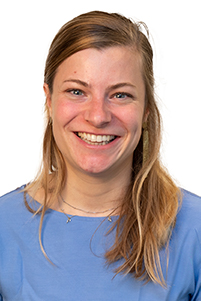Hannah De Moor
Te maken ende te leveren: The Transport of Netherlandish Carved Altarpieces
In the late fifteenth and early sixteenth centuries, Netherlandish carved altarpieces enjoyed great popularity both in the Low Countries and internationally. They were transported over land and sea to the Germanic territories (especially the Rhineland and Westphalia), France, the Iberian Peninsula, the Baltic Region, Poland, and Scandinavia. Today, over 350 of these altarpieces are preserved worldwide. Sweden was one of the principal export markets for these artworks from around 1470: in terms of the medieval “borders”, we can say that 39 Netherlandish carved retables, about ten altarpiece fragments, and two poupées de Malines are preserved there. This research aims to shed light on the way these retables were transported – at each stage of the journey – and the roles of all those involved. The talk will focus on the formal preparations to be made before a Netherlandish carved altarpiece could be transported to its foreign destination, the actual transport over land and sea, and the services provided upon arrival.
 Hannah De Moor
Hannah De Moor
M Leuven
Dr. Hannah De Moor is collaborator collection management at the Old Masters Department in M Leuven. She obtained her Ph.D. in Art History from KU Leuven in 2022, with a dissertation entitled Unravelling the History of Netherlandish Carved Altarpieces in Sweden. c. 1470-1527 and Beyond. As a Research Fellow at Illuminare – Centre for Medieval and Renaissance Art (KU Leuven), De Moor contributed to the Digital Corpus of Flemish Retables project, in collaboration with the RKD – Netherlands Institute for Art History in The Hague. She also is co-editor of the book Taking Shape: Sculpture of the Low Countries, 1400-1600, that is set to appear with Brepols in the Early Modern Cultural Studies series in 2023.
